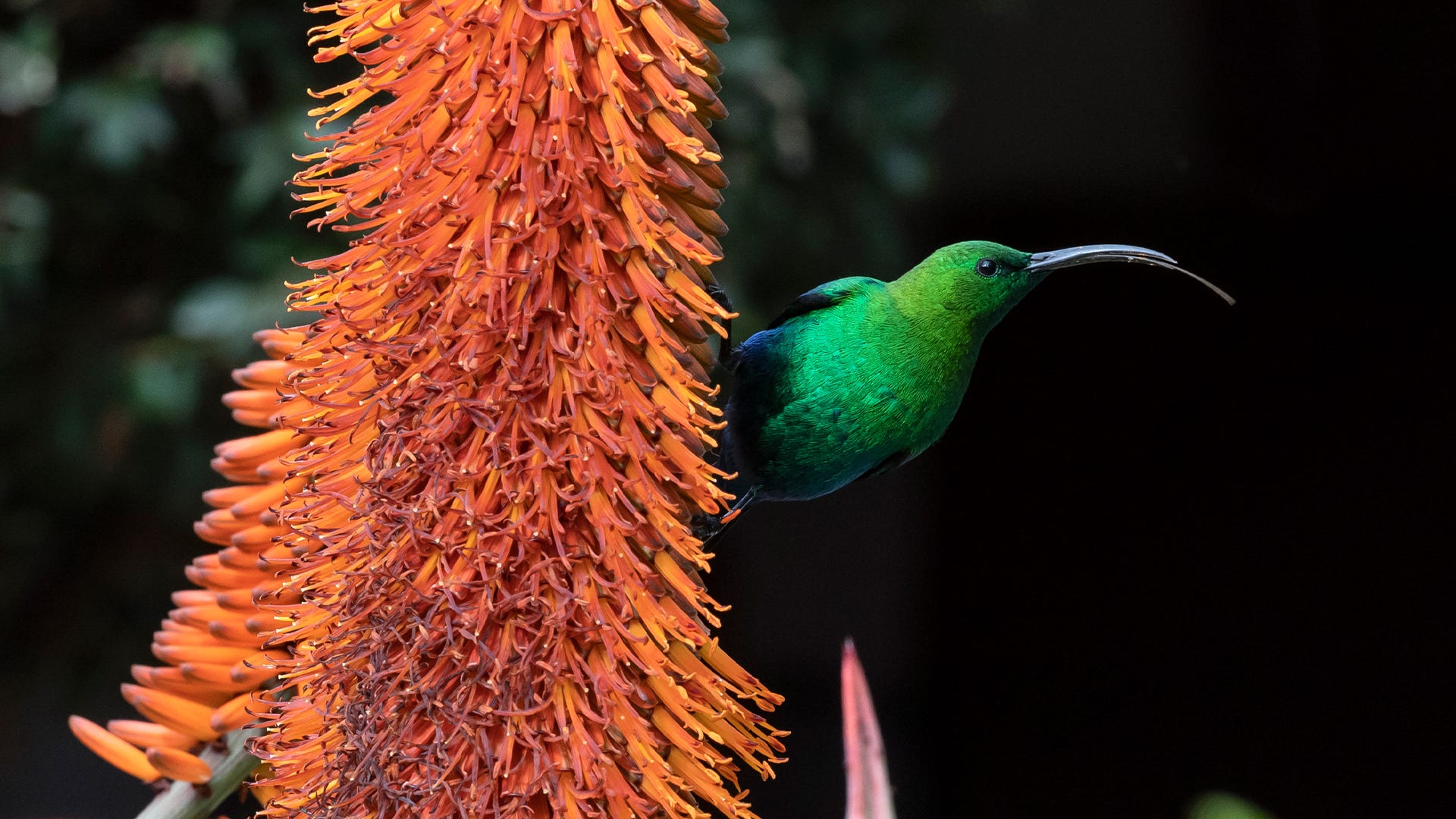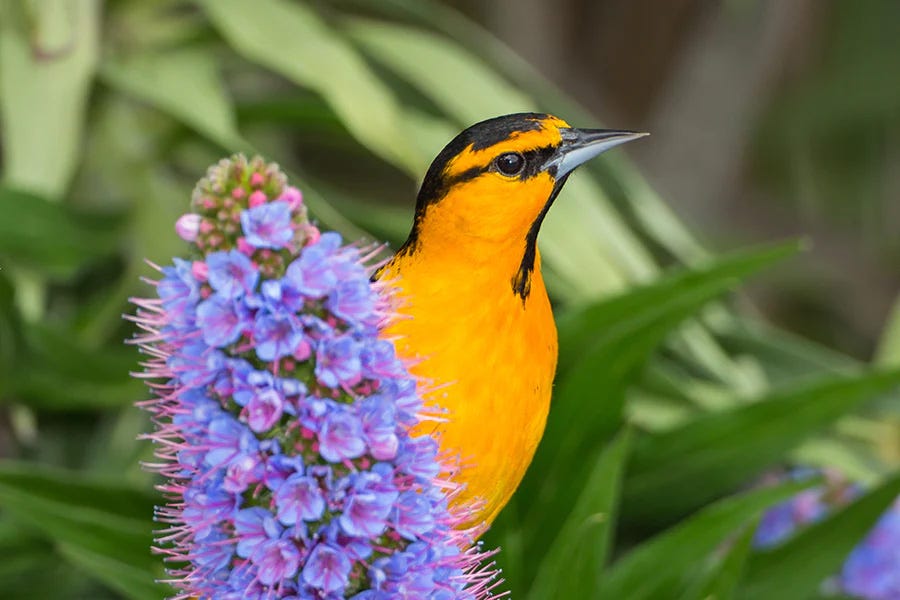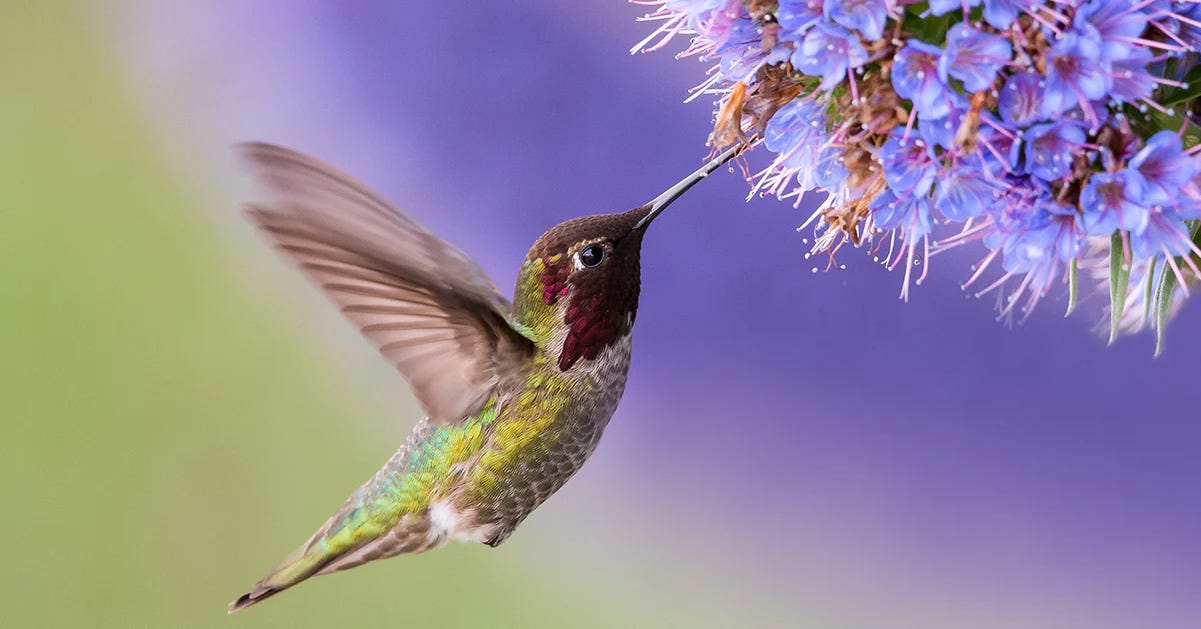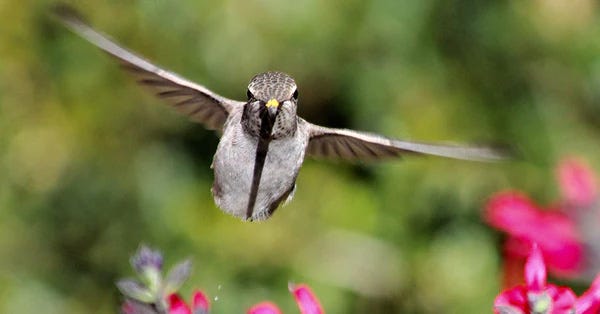
Pollination is critical for many flowering plants—from the decorative blooms in our flowerbeds to the blossoms that become delicious fruits and vegetables. But what role do birds play in pollination, why does it matter, and how can we help them be successful?
Pollination is part of the reproductive act of flowering plants. It's the process pollen grains moving between plants for fertilization that will produce seeds and fruits. Only about 10-15% of the plants on earth are capable of self-pollination, while the rest require some outside assistance to spread their pollen. Some plants use wind and water as pollination vectors, while other plants have evolved provocative blooms, bright colors, unique bloom shapes, sweet nectar, or alluring odors to attract pollinators.
The most well-known pollinators are bees, but many other insects and animals often help with pollination. Butterflies, moths, bats, geckos, slugs, and even some small mammals such as sugar gliders can all serve as pollinators.
See also: 6 Native Plants That Will Attract Hummingbirds to Your Regional Garden
Birds That Pollinate
Approximately 2,000 bird species assist with the pollination of different plants, a process called ornithophily. In tropical areas where birds are more abundant, pollination by birds is more common. In areas where insects are scarce—such as extreme deserts or high altitude regions—birds are also critical pollinators. While not all birds are expert pollinators, species that most frequently participate in pollination at least to some degree include:
- Honeycreepers
- Honeyeaters
- Hummingbirds
- Orioles
- Parrots
- Spiderhunters
- Sugarbirds
- Sunbirds
- White-eyes
Not all species of these birds are deeply involved in pollination. In North America, hummingbirds are the most common bird pollinators. Orioles also help pollinate in spring orchards. Other types of birds are more common pollinators in Africa, Asia, Australia, and South America.
See also: How to Plant the Perfect Birdseed Garden
How Birds Pollinate Flowers
Birds that provide pollination services are attracted to bright, bold blooms that offer a sip of sweet nectar.
These blooms are often red, orange, or pink (though they may be any color). They typically have narrow, tubular flower shapes to accommodate
the long, thin bills of expert bird pollinators. Flowers that are pollinated by larger bird species often have
sturdy stems to support the weight of a perched bird. Flowers that rely on bird pollination are often odorless
because birds have very little sense of smell. Blooms are open during the day when birds are most active. The
flower’s nectar is often hidden deep inside the bloom. This ensures that the bird has to come into close contact
with the flower and its pollen in order to reach the nectar.
When a bird visits a flower, it must dive deep into the bloom to get its sweet reward. As it does this, the flower’s pollen rubs off on the bird’s bill, head, back, or breast and sticks to the bird. When the bird then visits another flower—since each bloom only provides one small sip rather than a full meal—the pollen is transferred to the next flower and the plant is successfully fertilized.
See also: How Birds Help Your Garden
Why Pollination Matters
Roughly 85-90 percent of plants on earth require pollination assistance in order to reproduce. Of the plants that matter most to humans, 75 percent of food crops require pollination. This includes a wide variety of fruits (apples, citrus, pineapples, kiwis, bananas), nuts (peanuts, almonds), spices (nutmeg, vanilla), cucurbits (pumpkins, squashes, cucumbers), and other popular produce (asparagus, coffee).
Furthermore, crops used as fibers (cotton, flax) and agricultural feed (clover, alfalfa) also require pollination. Therefore, pollination affects textiles and meat production as well. Medicinal plants, construction materials, and foods for wildlife all require pollination. Without the help of insects, birds, and other eager pollinators, the plant life on this planet would be unrecognizable.
Helping Bird Pollinators
It’s easy to support bird-assisted pollination, and everything we do to support birds will help encourage more pollinators.
- Take steps to protect bird habitats, not just locally, but globally through international conservation programs that will protect birds’ habitats year-round.
- Choose native plants for landscaping, as they are most recognizable to birds and will be most helpful for all types of pollinators.
- Minimize or eliminate the use of insecticides, not only to protect insect pollinators, but also to provide nutritious protein sources for hungry birds.
- Offer birds a variety of safe, suitable nesting sites to help increase bird populations so more birds are available to provide pollination services.
- Support bird-friendly diverse agricultural practices, such as canopy-rich coffee and cacao plantations where birds are more plentiful.
Birds have a specialized and critical role to play in plant pollination all over the world. Once we understand the importance of that role and how pollination affects our lives, we can more easily protect birds and all pollinators.
See also: How Birds Benefit and Protect the Environment






